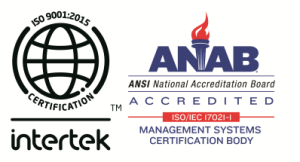Sand casting is an extremely flexible process that allows for production runs ranging from a single prototype or replacement casting (one-off) to outputs of thousands of units per month.
Binder and base sand selection are critical to minimize the upfront capital expenditure and price per unit, it’s important that designers and buyers are aware of the options to arrive in an optimum solution.
Base Sand:
Sands commonly used in sand casting include silica, olivine, chromite, and zircon sand.
Silica is commonly used in sand casting of ferrous and non-ferrous allows, it is commonly available and can be obtained in various graded sizes and shapes to suit the permeability and surface finish required by the foundry.
The other sands are commonly used in more niche applications were silica is not suitable, for example, olivine for manganese steels to avoid reaction with silica that causes casting defects.
Chromite is generally used in places where the mold needs high thermal conductivity to cool off a section of the part rapidly.
The use of these naturally occurring sands is starting to get complimented by the use of man-made ceramic sands which usually offer higher mold strength, better permeability, durability and reduced health hazards (airborne crystalline silica) at a somewhat higher cost.
Binder:
Greensand
The green sand process uses clay and water as a binder and it’s the most common binder used in ferrous and non-ferrous foundries.
To obtain a strong enough mold the green sand mixture needs to be rammed against the tool and the sand is used in its “green” state, meaning it still has water when the hot metal is poured.
This process is by far the cheapest as the cost of the mold materials and binder is fairly low. It is also well suited for automatic molding lines as there is no curing time so molds can be produced in a matter of seconds.
The drawback is that the relatively low strength of the molds limits the size and shapes that can be produced by this process.
With proper tooling selection, this process can be used for prototype and replacement castings as well as large production runs on automated machines.
No-bake or resin-bonded sands
In this process, the base sand is mixed with a chemical binder that cures and holds the individual grains together.
This process produces extremely strong molds that allow for intricate shapes and large castings to be produced, however, it does come with a high cost of mold materials, slow molding rates (binder needs time to set-in) and a higher cost of casting clean-up (the sand does not break off easily after casting).
Some commonly used binders used are furan resin, phenolic resin (PEP SET), sodium silicate and proprietary inorganic binders.
Tools for these processes usually involve wooden or aluminum impressions mounted on match-plates or cope and drag plates, usually, the choices are governed by the expected production runs.
New processes that use these binders allow for 3d printing the mold directly without the use of tooling providing the ultimate solution for prototyping sand castings with minimum straight-up costs and rapid turnaround times, the mold, however, needs to be re-printed for each part so the process is limited to short production runs or intricate shapes where the cost of tooling and mold assembly can be offset by 3d printing.



